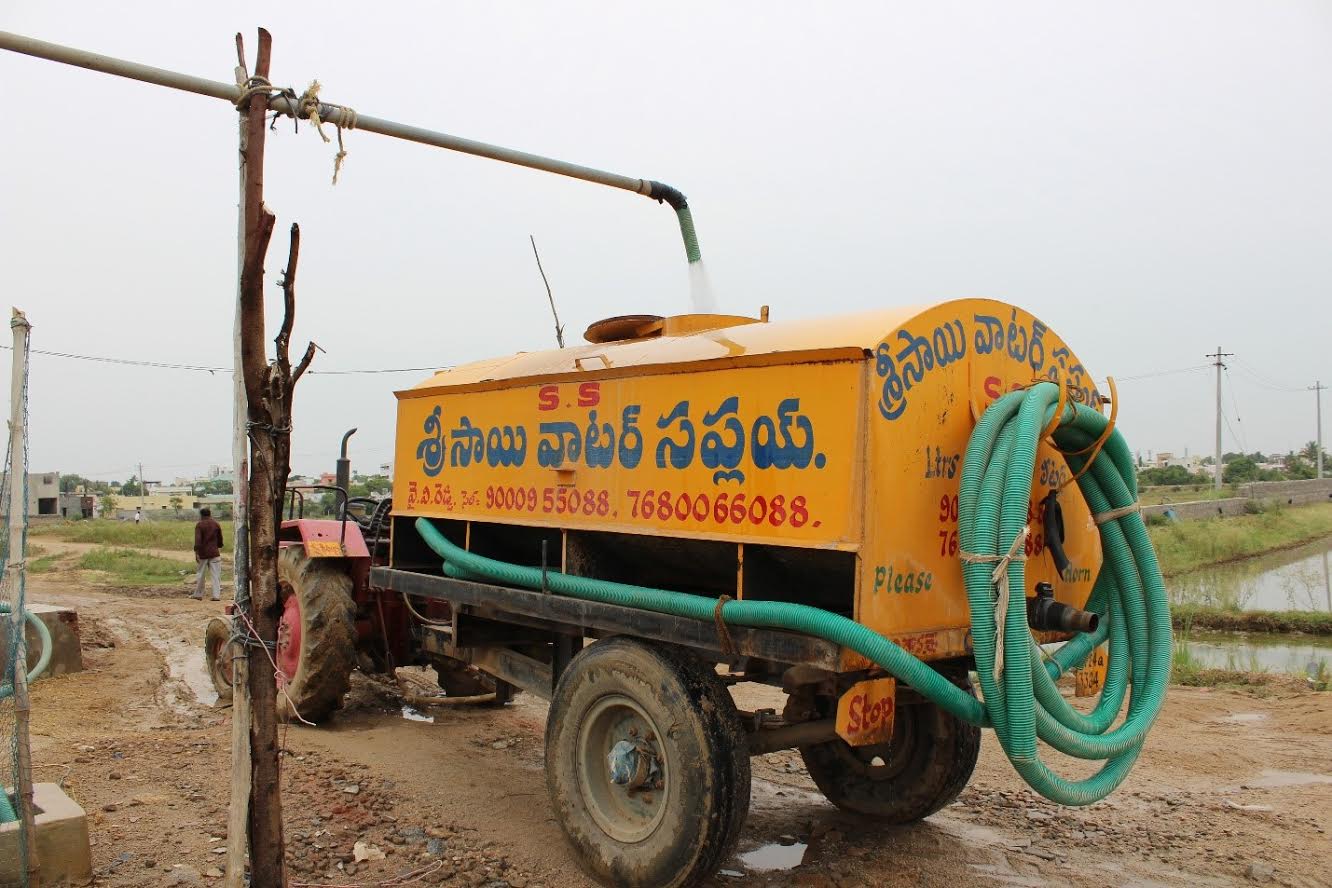
In Hyderabad, water tankers are the dominant source of daily water supply. Research for the project Ensuring Water Security in Hyderabad Municipal Area gave us some insights into the quality of water carried by these tankers. When the water is pumped from borewells in villages, it is not always transferred to tankers immediately. Many a time, water is pumped and stored in sumps. These sumps are lined with micron plastic sheets, which are used for a minimum of two years. This stagnant water is rarely covered. It ends up becoming a breeding ground for mosquitoes and other insects. It is not rare that lizards or chameleons fall into the water and end up dead. The water also develops a layer of moss. The micron plastic itself ends up having algae and moss stuck to it even when the water is changed. Before getting transferred into the tankers, the bigger leaves and insects get picked out; the rest go along with the water into the tanker.
Coming to the tanker itself, there are three kinds of materials that are usually used in the manufacturing of tankers. These are metal steel (MS/Iron), galvanised iron (GI) and stainless steel (SS). Stainless steel is the most expensive, followed by galvanised iron and iron. SS and GI are rust-free material. MS is prone to rusting. SS tankers have the longest shelf life of 15 years on an average. MS tankers can be used for a maximum of five years.
SS tankers are mostly used by the Hyderabad Metropolitan Water Supply & Sewerage Board or HMWSSB, since they can afford it. MS, being the cheapest, is used by a majority of informal water tankers. Water cannot be stored in them and needs to be delivered within 20 minutes. If the water is stored for longer, the insides of the tanker begin to rust. Every six months, the inside of the MS tankers are coated with waterproof paint to cover up the rust.
Our research, however, has revealed that sometimes the HMWSSB also buys water from these private tankers. So even though their tankers are in a better condition, the water that it carries may have already been exposed to rust.
This water is used for all domestic purposes in the households of peri-urban Hyderabad. While we make sure that the water we drink is pure and safe, there is no standard of hygiene for the water for daily use. The whole supply chain of informal water market is not regulated and the quality of water is doubtful. Our research in the peri-urban spaces has revealed that people use the water from these tankers for both domestic purposes and to drink. People do complain of body aches and pains from drinking contaminated water. But having different sources of water for different uses is a privilege that not many can afford.
This is one from a series of blogs written by the researchers of SaciWATERs after their work on a two-and-a-half-year-long project titled ‘Ensuring Water Security in Metropolitan Hyderabad: A study of Hydrological Settings and Informal Institutional Dynamics’ to understand the contribution of informal markets to the overall water security of metropolitan Hyderabad.
/articles/look-inside-your-water-tanker